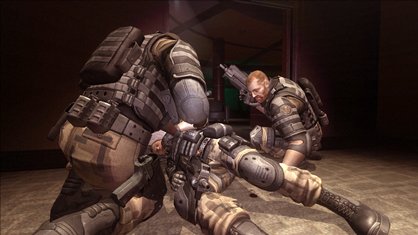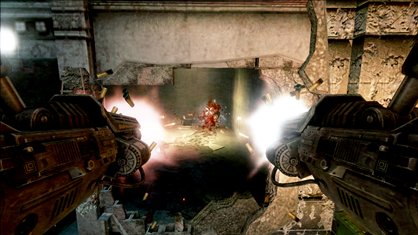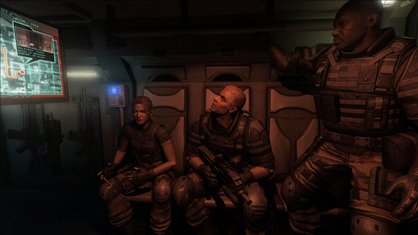FEAR 2: Project Origin – hands-on
The only eight year-old girl on Earth that isn't into High School Musical or Hannah Montana
Monolith’s second outing for her of bedraggled hair and psychic entombment is crash-landing in a very different pool of expectation to the original FEAR. In the past few months, shooters have changed. Left 4 Dead has nailed co-op, Far Cry 2 gave us an open world, Fallout 3 merged RPG stats with action... the noble first-person shooter, once the most stodgy template of all, is evolving. All of which makes you wonder if a shooter with as strong a corridor ethos as Project Origin could be spiraling into the danger zone.

We’re not denying that they’re nice corridors. You can’t say that Monolith hasn’t answered their critics. The relentless grey offices and grey slums of FEAR, and its limited selection of copy and paste slo-mo soldiers, have been shaken up more than a little. Environments are more interesting to look at and to fight in, military goons are accompanied by a fuller and more rounded complement of mutants, psychic ghosts and robots, and every level is punctuated by far more dialogue and scripting.
Whereas the original FEAR was a lonely business (with you being part of a team, but coming up against contrivance after contrivance to split you up) Project Origin is putting a lot more stock into battling alongside a team of friendly AI, and having them being vaguely fun to kick around with to boot.
After an initial Alma interlude, the game opens with your character (one Michael Becket) sitting in what is essentially a Scooby Doo Mystery Machine for modern well-armoured supersoldiers. There’s a lot of banter and casual swearing, but as you work your way inside the tower block that you’ve got to infiltrate, you’re already warming to them. They respond to your actions, for example questioning just why you’re shooting a statue for no apparent reason, or asking where you think you’re going when you start running off down the wrong corridor.

They’re also gently amusing in the ways they interact, with the squad commander demanding that the clearly demarked ‘funny’ character climb the hundreds of stairs up to the penthouse suite while everyone else takes the lift. Inevitably most of these poor souls are going to die horrible deaths before the end of the game – but from what we’ve played at least, you’ll probably be sorry to see them go.
Something else the first level makes immediately clear is that environments are much more colorful and interesting – albeit with the caveat that the lights may go off at any second. Coffee shops, stunning lift rides, swimming pools, rooftop party locations, antique collections, precarious window cleaner lifts... it’s all rather glam.

Everything you experience in the first half hour, though, is building up to the climactic explosion at the end of FEAR, after which point the storylines converge. Your character, Becket, isn’t a blood relative to Alma like the original’s Point Man, but he is psychically tweaked towards her wavelength. As such, she’s trying to convey different messages to you (as well as kill you) at the same time as causing all manner of chaos in the first game. And if that doesn’t make her a two-timing hussy we don’t know what does. This sensibility towards the untoward also makes you a potential applicant for the slow-motion frivolity that made FEAR famous – and when you get the ability in the second level it’s a fair bet that it’ll be at the hands of Genevieve Aristide, the Armacham boss you were originally out to apprehend, and who has a fair few skeletons in her closet. As well as howling wall-crawling corpses.
Sign up to the GamesRadar+ Newsletter
Weekly digests, tales from the communities you love, and more


